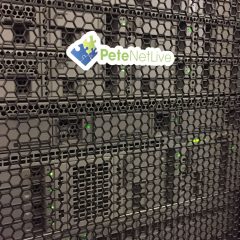Exchange 2019: How Many CALs/SALs Do You Need?
KB ID 0001703 Problem At his point I’m going to assume you know that there are Standard Exchange CALs/SALs, and Enterprise Exchange CALs/SALs. And you know the difference! If you’re unsure see my comments here. With older versions of Exchange 2010/2007 etc. You could get this information from the GUI. Now you need to use some PowerShell. Solution The two commands you want to use are; Find Out How Many Exchange Standard...
Exchange – Move ‘ALL’ Mailboxes From One Database to Another
KB ID 0000864 Problem While replacing an Exchange Server on my test network last week, I needed to get all the mailboxes moved across to the new one. Exchange gets upset if you try and delete a mailbox database that has data in it. Solution 1. Launch the Exchange Management Shell > Firstly lets get the names of my Databases, then I can simply copy and paste them into the move mailbox command. Get-MailboxDatabase Get-Mailbox...
Exchange – Display Mailbox’s by size
KB ID 0000469 Problem Yesterday a client asked me how he could find out, which of his users were the “worst offenders” for mailbox size. Normally a simple Get-MailboxStatistics command would be fine, and we would sort the results in descending order. Solution On one of the Exchange servers, launch the Exchange Management Shell. Issue the following command: Note: That’s all one command, replace the name PNL-MAIL-2019...
Exchange Exporting Mailboxes to PST Files
KB ID 0001360 Problem Applicable To: This procedure works on all versions of Exchange Newer than Exchange 2010 SP1 (update rollup 8). If your Exchange server is OLDER than that you will need to use the following link; Exchange 2007 / 2010 (Pre SP1)- Export Mailbox’s to PST files The following procedure exports a user mailbox to a PST file on a network share. Solution Note: Not Even ‘Exchange Organisation Administrators”...
Exchange 2019: Presenting Outlook Anywhere With WAP
KB ID 0001548 Problem Note: Applies to Exchange 2019, 2016, and 2013. This is pretty much PART TWO, of presenting ‘Exchange Web Services’ using Web Application Proxy. Back in PART ONE we looked at publishing OWA and ECP, and that required having an ADFS server. To present the other web services, e.g Outlook Anywhere, Exchange Active Sync, Offline address book etc. You don’t need ADFS, you simply use ‘pass...


